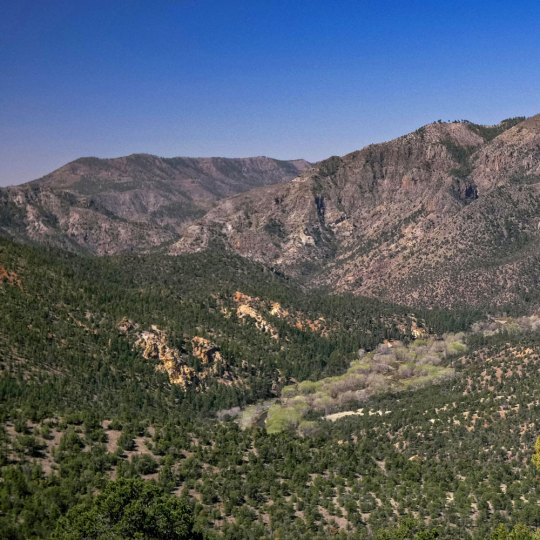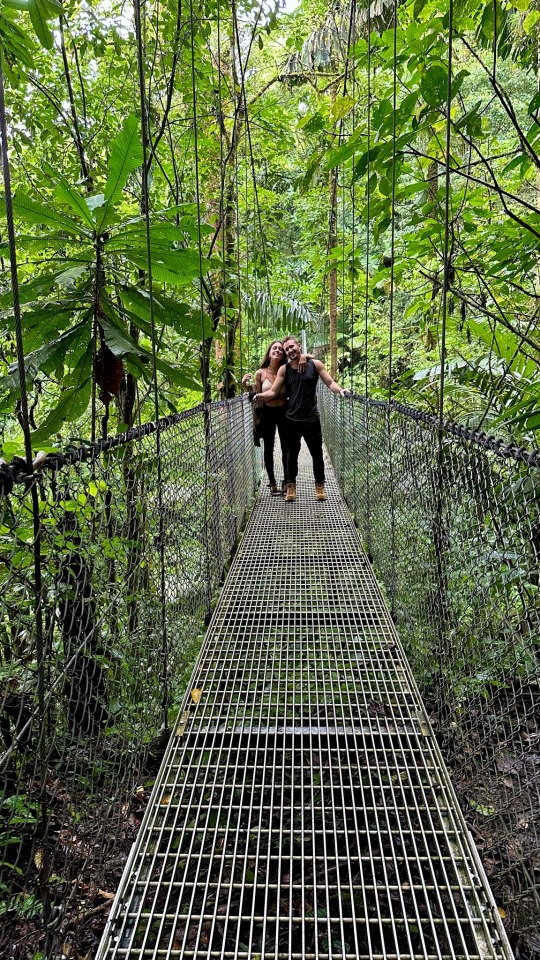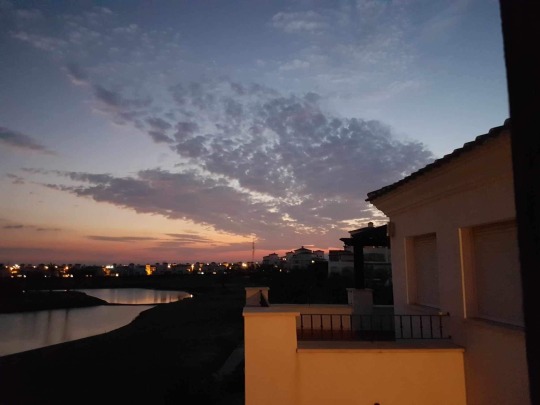#TravelLife
Video
Switzerland in all Seasons ❄️🌸☀️🍂
#switzerland#swissaround#travel#tiktoktravel#swiss#landscape#Travel#Wanderlust#Adventure#Explore#TravelPhotography#InstaTravel#TravelGram#TravelInspiration#TravelGoals#BucketList#TravelAddict#TravelLife#TravelBlogger#TravelDiaries#RoamThePlanet#TravelAwesome#TravelCouples#TravelCommunity#TravelDifferently#TravelEats#TravelTips#SoloTravel#TravelWithMe#TravelDreams
600 notes
·
View notes
Video
Source
More
730 notes
·
View notes
Text

The Gila National Forest has over three million acres of forest, mountains, and range land. It is best known for its wilderness areas, in particular the Gila Wilderness - the first wilderness in the United States. The Gila River originates in these mountains, emptying into the Colorado River near Yuma, Arizona. The Gila is the state’s only free flowing river (no dams), but it was listed as the most endangered river in the U.S. in 2019.
#New Mexico#Gila National Forest#OptOutside#roadtrip#travel#daytrip#nature#geology#wilderness#hikingadventures#travelblogger#travellife#whataview#scenic#earthpix#NewMexico#explore#landscape#naturelovers#landscapephotography#HighDesert
54 notes
·
View notes
Text
Auf dem Weg in den Megapark Mallorca! 🌴🍹 #Mallorca
#Megapark#Partyinsel#Urlaub#SonneGenießen#Feiern#TravelGoals#Partyurlaub#Mallorcaliebe#Sommerferien#Strand#Palmen#SonneundMeer#TravelLife#Urlaubslaune#Chillen#Entspannung#AbenteuerUrlaub#Erlebnisse
31 notes
·
View notes
Photo

Oulanka National Park, Finland Photograph by @mpxmark
(via Pinterest)
#travel#travelgram#traveling#travelphotography#travelling#travelblogger#traveler#traveller#travelingram#travelblog#travels#traveltheworld#traveladdict#travelphoto#travellife#traveldiaries#travelpics#earthroulette
112 notes
·
View notes
Text





Can you tell how windy it is up here? 😅
Embracing the windy rainy season in the Andes has been an experience so far!
In about 3 weeks, the mountains will be flourishing green again, the lakes will fill up and the flowers will start to bloom 🌷
I’ve always loved the change of seasons in the mountains ❤️
21 notes
·
View notes
Text
Have an adventurous weekend…

@gskiphotography
…just like this brave turtle walking through the Tanzanian safari with his head up.
#camera#istock#travelmagazine#travelphotography#travellife#all around the world#photoaday#wildlifephotography#africa#traveltheworld#turtle#turtles#weekendvibes#weekend#Saturday#saturdaymotivation#motivation#power#photooftheday#animal of the day#wildanimalphotography#wildlife africa#travel#traveller#original post#original photographic works#original photography#tumblrphoto#travel photography#original photogrpahy
63 notes
·
View notes
Text
Tag your Love ❤️
.
Parakkat Nature Hotels & Resorts
2nd Mile, Chithirapuram P.O Munnar – 685565
Contact:7025458888, 9400301111
Visit:https://parakkatresorts.com/
#UltimateEscape#travel#india#nature#munnar#vacation#hotel#godsowncountry#photography#travelgram#restaurant#holiday#picoftheday#summer#love#travelphotography#naturelover#parakkatnatureresort#resort#TravelLife#naturebeauty
13 notes
·
View notes
Text



Exploring Costa Rica 😍
#naturelovers#couple content#beautiful#nature#beautiful views#couple#coupletravel#naturephotography#costa rica#rainforest#junglevibes#travellife#travelling
48 notes
·
View notes
Text
Me eating crazy spicy food in Thailand
#Travel#Wanderlust#Explore#Adventure#TravelGram#TravelPhotography#TravelLife#Journey#Discover#Traveling
8 notes
·
View notes
Text

Inca Trail all information!
Title: Hiking the Inca Trail in Peru: A Journey Through Time and Nature
Peru's Inca Trail is more than just a trek; it's a journey through history and nature that captures the essence of the ancient Inca civilization. This legendary trail is a bucket-list experience for adventurers and history enthusiasts alike. In this blog post, we'll delve into the history, offer essential tips, explore regulations, discuss the best seasons to visit, and prepare you for the altitudes you'll encounter on this epic journey.
The Historical Marvel of the Inca Trail: The Inca Trail is steeped in history, serving as a testament to the architectural and engineering prowess of the Inca Empire. This 26-mile (42-kilometer) trail once connected Cusco, the imperial capital, to the sacred city of Machu Picchu. Along the way, hikers encounter an array of archaeological wonders, including ancient settlements, temples, terraces, and fortresses that whisper tales of a bygone era.
Essential Tips for Your Inca Trail Adventure:
Plan Ahead: Due to conservation efforts and the preservation of this heritage site, you must book your trek with a licensed tour company. Permits are limited, so securing your spot well in advance is crucial.
Physical Preparation: While the Inca Trail is manageable for most, it's a challenging endeavor. Preparing with regular walks or hikes will enhance your experience.
Acclimatization: Cusco's high altitude can take a toll. Spend a few days in the city before your trek to acclimatize and avoid altitude sickness.
Regulations to Preserve the Inca Trail: The Peruvian government has implemented regulations to protect the trail and its environment. These include group size limits, designated campgrounds, and strict waste management practices. These measures aim to minimize the impact on this historical and ecological wonder.
Choosing the Right Season: The best time to embark on this adventure is during the dry season, which spans from May to September. The weather is more predictable, and the trail is at its most picturesque. However, it's also the busiest time, so booking your trek early is essential. If you prefer fewer crowds, consider visiting during the wet season (October to April), but be prepared for rain and muddy trails.
Conquering the Altitudes: The Inca Trail involves significant altitudes, with Dead Woman's Pass reaching around 13,828 feet (4,215 meters). Acclimatization in Cusco is key. Drinking plenty of water and taking it slow are essential strategies to combat altitude sickness.
Packing Like a Pro: Your packing list should include layers for varying temperatures, waterproof gear, sturdy hiking boots, a quality daypack, a refillable water bottle, and essentials such as a hat, sunglasses, and sunscreen.
Respect for Nature and Culture: As you hike the Inca Trail, remember to stay on designated paths, respect local customs, and follow the "leave no trace" principle. The Inca Trail is a UNESCO World Heritage site, and preserving its sanctity is everyone's responsibility.
The Inca Trail offers not just an adventure but a remarkable journey into the heart of the Inca Empire. Whether you're an intrepid explorer or a history buff, this ancient trail promises an unforgettable and awe-inspiring experience. As you embark on this trek, be prepared, responsible, and ready to be transported through time as you explore this incredible route.
FAQS
Inca Trail Frequently Asked Questions (FAQ)
What is the Inca Trail, and why is it famous?
The Inca Trail is a historic hiking route in Peru that leads to the magnificent city of Machu Picchu. It's famous for its stunning scenery, ancient archaeological sites, and the chance to walk in the footsteps of the Inca civilization.
Do I need a permit to hike the Inca Trail?
Yes, you must obtain a permit to trek the Inca Trail. These permits are limited to help protect the environment and cultural heritage. It's essential to book your trek with a licensed tour operator well in advance, as permits can sell out quickly.
How long is the Inca Trail, and how many days does the hike take?
The classic Inca Trail is approximately 26 miles (42 kilometers) long. Most treks span 4 days and 3 nights, covering the distance gradually to help with altitude acclimatization.
When is the best time to hike the Inca Trail?
The dry season, from May to September, is the best time for trekking. However, it's also the busiest period. The wet season (October to April) has fewer crowds but more unpredictable weather.
What's the altitude of the Inca Trail, and how can I prepare for it?
The highest point on the Inca Trail, Dead Woman's Pass, stands at approximately 13,828 feet (4,215 meters). To prepare, spend a few days acclimatizing in Cusco and stay hydrated. Take it slow and enjoy the journey.
What should I pack for the Inca Trail?
Essentials include sturdy hiking boots, waterproof clothing, layers for varying temperatures, a quality daypack, a refillable water bottle, and personal items such as a hat, sunglasses, and sunscreen.
Are there any regulations for preserving the Inca Trail?
Yes, there are regulations in place to protect this historical and ecological wonder. They include group size limits, designated campgrounds, and strict waste management practices. Travelers must follow these rules to minimize their impact on the environment and heritage sites.
What should I know about Machu Picchu itself?
Access to Machu Picchu is limited, and visitors are encouraged to explore responsibly. Please stick to designated paths, respect local customs, and ensure you follow the "leave no trace" principle while visiting this UNESCO World Heritage site.
Is a guide required for the Inca Trail?
Yes, trekking the Inca Trail requires a licensed guide, which is typically provided by tour operators. The guide not only ensures your safety but also enhances your experience by sharing insights into the history and culture of the trail.
Can I hike the Inca Trail on my own?
No, independent hiking on the Inca Trail is not allowed. Travelers must be accompanied by a licensed guide from a registered tour operator. This is to protect the environment and cultural heritage.
Is there a limit to the number of hikers on the Inca Trail each day?
Yes, the number of trekkers is strictly regulated to protect the trail and its surroundings. Only 500 permits are issued per day, and this includes guides and porters. Therefore, it's essential to book your trek well in advance.
What is the best way to book a trek on the Inca Trail?
Booking through a reputable tour operator is the best way to secure your permit, guide, and all the logistics for your trek. These operators handle the permit application process and provide a comprehensive experience for trekkers.
What's the level of difficulty on the Inca Trail?
The Inca Trail is considered a moderate to challenging trek. It involves steep ascents and descents, as well as varying terrain. While it's suitable for most hikers, it's important to be physically prepared and mentally ready for the journey.
Are there any age restrictions for the Inca Trail?
There are no strict age restrictions. However, hikers should be in good physical health and prepared for the altitude and varying trail conditions. Children, especially younger ones, may find it challenging.
Can I customize my Inca Trail experience?
Yes, some tour operators offer variations of the Inca Trail that can cater to different interests and fitness levels. If you have specific preferences, discuss them with your tour operator when booking.
These FAQs should provide you with valuable information and help you prepare for your Inca Trail adventure. Remember, it's not just a hike; it's a journey into history and nature that promises an unforgettable experience.
#Travel#Adventure#Wanderlust#Explore#Vacation#Nature#TravelPhotography#BeautifulDestinations#BucketList#TravelGram#TravelGoals#InstaTravel#Wanderer#Traveling#AdventureTime#ExploreTheWorld#TravelAddict#RoamThePlanet#PassportReady#TravelLife#TravelBlog#TravelInspiration#TravelersNotebook#TravelCouples#SoloTravel#incatrail#inkatrail#traveltoperu#travelperu#traveltips
7 notes
·
View notes
Photo

Travel tips for Venice Italy including recommendations for places to eat, getting around Venice, and photo tips. Read about my honeymoon trip to this amazing city with tips for a romantic and less stressful trip! Pictures of the Grand Canal, gondolas and St Mark's Square included. things to do in Venice
#venice#italy#europe#europetravel#travelguide#Travel#Wanderlust#Adventure#Explore#TravelPhotography#InstaTravel#TravelGram#TravelInspiration#TravelGoals#BucketList#TravelAddict#TravelLife#TravelBlogger#TravelDiaries#RoamThePlanet#TravelAwesome#TravelCouples#TravelCommunity#TravelDifferently#TravelEats#TravelTips#SoloTravel#TravelWithMe#TravelDreams#NomadLife
225 notes
·
View notes
Text

Mahmud Efendi Hazretleri’nden duâlar..
#MahmudEfendiHazretleri#traveler#traveltheworld#traveller#igtravel#travelingram#travelblog#traveladdict#travels#mytravelgram#instatraveling#traveldiaries#travelphoto#travellife#travelawesome#travelpics#natgeotravel#travelholic#travelbug#luxurytravel#travelgirl#travelstoke#traveldeeper#solotravel#worldtraveler#travelers#travelmore#travellingthroughtheworld#travelpic#traveldiary
7 notes
·
View notes
Text

Sunset vibes
#sunset#beautiful views#view#travel vibes#vibes#summer#summer vibes#summer vacation#travelblr#travelbucketlist#luxury travel#travellife#travelgram#travelling#travel blog#travel
5 notes
·
View notes
Photo

Las Vegas . . . Credit 👉🏆📸 @jaithomass . . . . Follow 👉 🇺🇸@conexao.america for more photos and movies about United States 🇺🇸 . . . . Alliance @america_states @enjoy_la_ @latinbrazil . . . . ✈ Mark your photo with tag #conexaoamerica or @conexao.america and we'll post it! . . . . #travelpics #travelblog #travellife #travel #travelling #traveltheworld #travelgram #travelphoto #traveladdict #travelblogger #travelawesome #lasvegas #vegas #travelphotography #traveldiaries #traveling #travelingram #nevada (em Las Vegas, Nevada) https://www.instagram.com/p/Ckyc4vYpMrA/?igshid=NGJjMDIxMWI=
#conexaoamerica#travelpics#travelblog#travellife#travel#travelling#traveltheworld#travelgram#travelphoto#traveladdict#travelblogger#travelawesome#lasvegas#vegas#travelphotography#traveldiaries#traveling#travelingram#nevada
38 notes
·
View notes
Text

Journey into the Cyberpunk Frontier: The Future of Travel as a Digital Nomad.
Step into the cyberpunk realm where the boundaries between physical and digital worlds blur, and the notion of travel transcends conventional limits. In this futuristic landscape, living as a digital nomad takes on new meaning, fueled by the transformative power of blockchain technology and cryptocurrency.
Imagine a world where your passport is not a tangible booklet but a digital passport, securely stored on the blockchain. This digital passport contains all your essential identification and travel documents, seamlessly accessible from anywhere in the world. No more lost passports or bureaucratic hurdles—just effortless, streamlined travel at your fingertips.
As a global citizen navigating the cyberpunk frontier, you rely on cryptocurrencies like Bitcoin, NFTs (Non-Fungible Tokens), and other digital assets as your primary means of exchange. Whether you're paying for accommodations, purchasing goods and services, or funding your next adventure, cryptocurrency offers unparalleled flexibility and security in a decentralized economy.
Gone are the days of traditional banking systems and cumbersome currency conversions. With blockchain technology, transactions are executed with lightning speed, free from intermediaries and third-party oversight. Smart contracts govern agreements and ensure trustless transactions, revolutionizing the way we engage in commerce and finance on a global scale.
But the true essence of this cyberpunk odyssey lies in the freedom it affords—the freedom to roam the world without borders, to immerse yourself in diverse cultures and landscapes, all while maintaining a digital footprint that transcends physical constraints. Your identity is no longer tied to a single location; instead, it exists in the boundless expanse of the digital realm, woven into the fabric of the metaverse.
Yet, amidst the neon-lit skyscrapers and bustling cityscapes of this cyberpunk future, there's a sense of solidarity among fellow travelers—a recognition that we are all interconnected, bound together by our shared humanity. In this brave new world, the concept of "home" extends beyond the confines of four walls, encompassing the entire planet as our collective sanctuary.
So, as you embark on your journey as a digital nomad in the cyberpunk frontier, remember that the future of travel is not just about reaching your destination—it's about embracing the endless possibilities that lie ahead, forging new connections, and expanding your horizons in ways you never thought possible. Welcome to the future. Welcome to the world of tomorrow.
#solo travel#travel blog#travel tips#travelblogger#luxurytravel#travelgram#travelblog#travel photography#traveling#travellife
2 notes
·
View notes